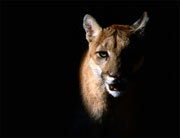primate justice
"Why Primate Research at the UW is Unethical"
Luciano Matheron videotaped it and aired it last Thursday on his show "Freedom of Peace" on line and also on Cable 95 or Digital 991. In case you weren't able to hear Rick Marolt on the 1st, you can watch it on our program tonight, from 10-11pm.
Last week I showed a past episode with Rick Bogle discussing Bill Lueder's Isthmus cover story about Monkey ro4040.
I thought it was very relevant to the issue of the ethics in UW's primate research, so here's the link to Bill's article again:
http://www.isthmus.com/daily/article.php?article=25897
Check out the extensive coverage and documents on this link regarding primate research.
IDA Undercover TV follows from 11-11:30, and tonight's episode exposes the cruelty of the fur industry, and the Australian mulesing practice still used on sheep, the cruel transporting of sheep and Martha Stewart speaks up against fur.
Past episodes of Animals Have Rights: http://www.vimeo.com/animalrights/videos
and keep up with Rick's commentaries on http://primateresearch.blogspot.com
www.madisonmonkeys.com
http://www.blogger.com/www.allanimals.org
Please forward this information to others and contact your city alder and Dane County supervisor and urge them to find out more about this issue. It's time for our community to stop avoiding this disturbing ethical question and finally address it. As long as we do nothing, this cruel and wasteful research will continue.
Please become involved and help us and the animals.
Thank you,
Ann
------------------------------------------------------------------------------------
"On the elevator ride to our destination, one worker tells Capuano, "The guys you're looking at are getting big for their cage."
It's true. r04040 and his cellmate, r04060, are both nearing 10 kilos (22 pounds). The federal Animal Welfare Act requires that monkeys between three and 10 kilos each have 4.3 square feet of floor space (that's 25 by 25 inches).
But at 10 kilos they must get six square feet.
We enter a room with about a dozen double cages, each less than four feet in any direction. r04040 and r04060 are the only two monkeys in the room, in an upper-tier cage. Capuano says the room is going to be hosed down later that day, as is done every two weeks. These two were left behind for now, pending our visit.
Both monkeys react with alarm to our intrusion, pacing quickly back and forth and on several occasions throwing their bodies against the side of the cage, making a crashing sound. I try to take some photos, but it's difficult.
Capuano asks if I'd like r04040 put into a smaller enclosure nearer the floor. This will require the assistance of one of the staffers I met a few minutes ago.
While we're waiting for her to arrive, Capuano shows me a pair of larger, vaguely zoo-like rooms across the hall, joined by a transit hole. Both are also empty, due to renovations. Here, I'm told, is where r04040 spent most of his life, housed with about 10 other rhesus macaques.
Capuano also shows me a room like r04040's that happens to be full of monkeys. They dart about and make a lot of noise. Each cage contains a red plastic ball, one of the "enhancements" provided by the center to keep the monkeys occupied.
For a minute I am left alone by the doorway of this room. Suddenly one monkey, a 10-year-old male, leaps onto the cage wall, clutches the wire with all four limbs and pulls his body violently into it, eight times in rapid succession: Bam, bam, bam, bam, bam, bam, bam, bam!
In the hallway are two large cages, each containing about 10 tiny marmoset monkeys. They're perched shoulder-to-shoulder on the top rung, as though posing for a family portrait. We make our way back to r04040's room.
The staffer, whom I hardly recognize in her getup, holds a transfer cage up to r04040's enclosure and creates an opening. Like a shot he rushes in, hitting the far wall.
"See how fast he did that?" asks Capuano, explaining that the monkeys are taught this, for when they must be moved. r04040 exits the transfer cage into the smaller enclosure just as swiftly.
I make mostly unsuccessful attempts to photograph my monkey as he darts nervously around his strange new environs. He regards me warily, opening his mouth in an obvious threat. Even when he adjusts to our presence — becoming, says Capuano, "more comfortable" — there is still fear in his eyes.
I wonder what I'm doing here, taking his picture, using him. Is the trauma my visit causes justified because I plan to write about it?
Comments (9)
"All that is necessary for evil to triumph is for good men to do nothing." Edmund Burke















































0 Comments:
Post a Comment